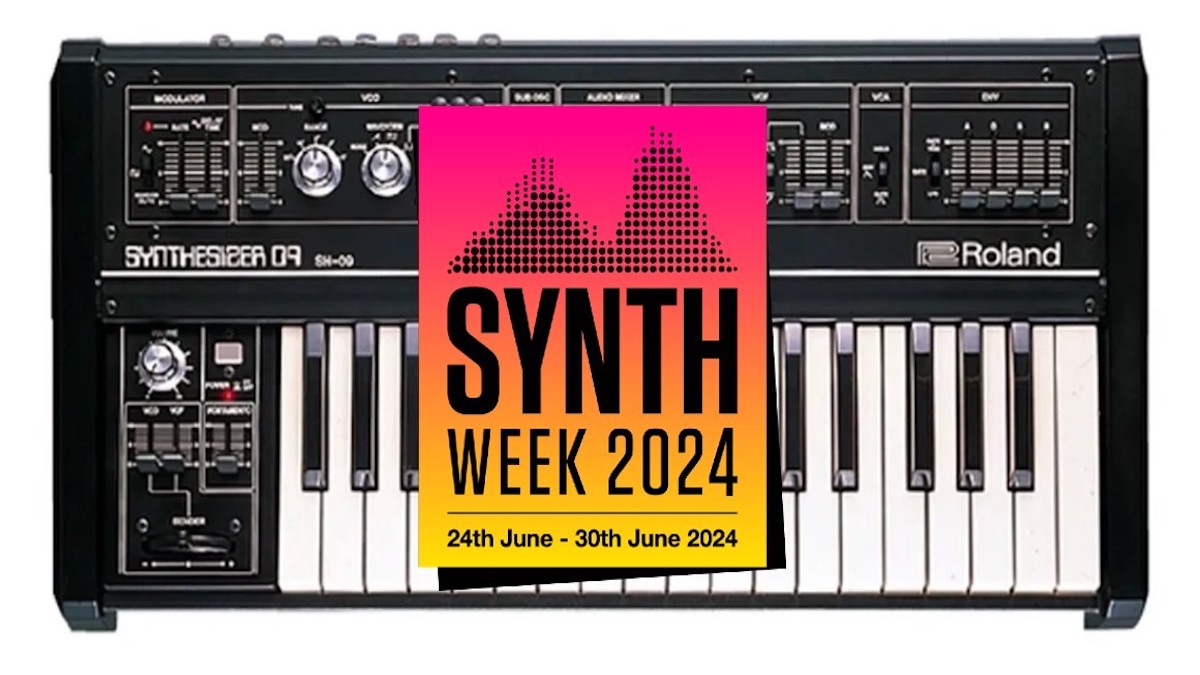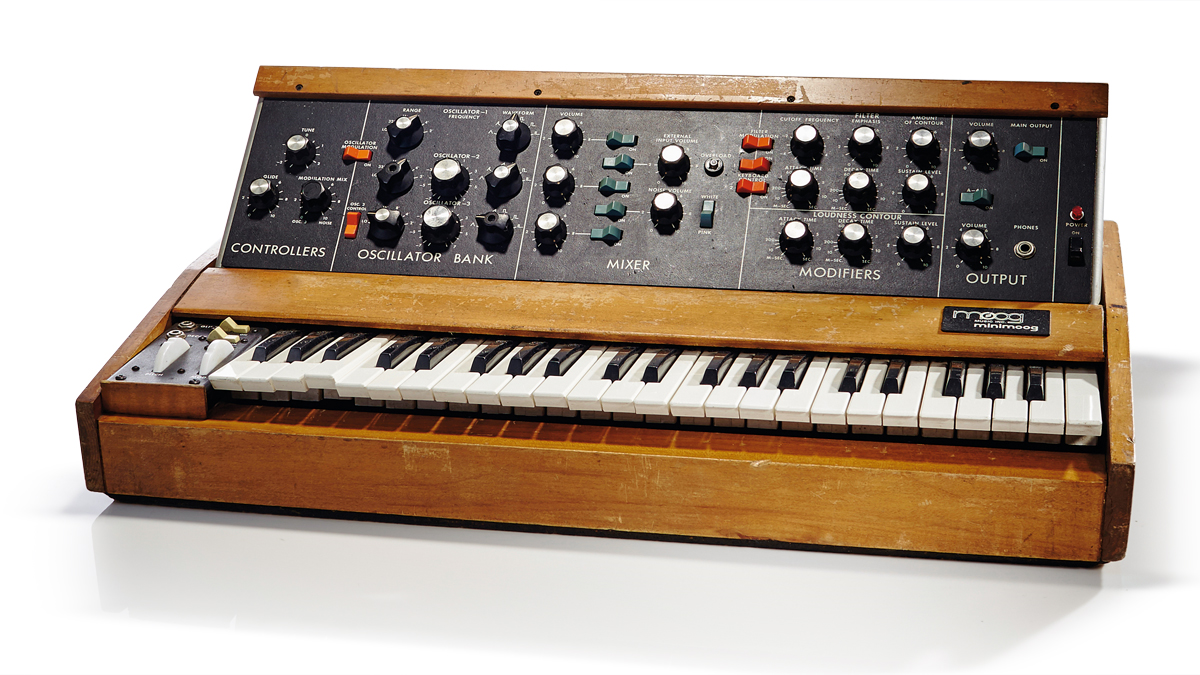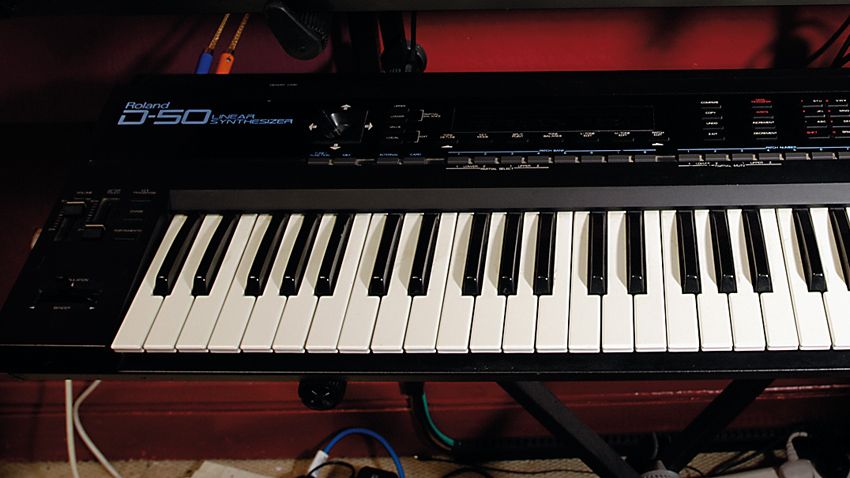
SYNTH WEEK 2024: Of course every synth wants to be a classic. But not every synth can be. With hundreds of models out there and endless new lines and revamps from the big manufacturers landing ever year, how come there are only around 30 solid gold synth smashes that you can name?

The 10 greatest synthesizers of all time: the machines that changed music
Perhaps the price wasn't right. Perhaps there was one corner cut too far. Perhaps they didn't look good, or sound right? Or – most criminally – they did everything right but due to sheer bad luck or timing simply didn't get the credit that they deserved upon release.
So it’s a good job that we’re here to set the record straight and speak up for 12 forgotten and underrated synths that could and should have earned that ‘classic’ tag.
Some got caught backing the wrong type of tech just as the wind changed. Others were deemed too pricey at the time but can be snapped up for far less today. And others just didn’t get the marketing mix to make it alongside lesser synths from bigger names.
Without further ado, let’s meet the unfortunate also-rans that should be giants. Here are our favourite 12 synth underdogs.
1. Sequential Circuits Six-Trak
In 1978, Dave Smith’s Sequential Circuits released a bonafide legend in the form of the polyphonic, programmable Prophet-5. When the company fizzled out nearly a decade later, it’d just released the Prophet-VS which likewise would come to be seen as a classic.
However, by that time it was too late to save a company that seemed to struggle to fill the technological gap between its two masterpieces. Along the way, it produced some landmarks (Prophet-600) and some head scratchers (the Max). Some of its less expensive instruments were (and are) dismissed, possibly tarnished by the company's eagerness to dabble downmarket or perhaps unfairly compared to Sequential’s high-end products.
Case in point: the Six-Trak. What might have been seen as a groundbreaking instrument for its combination of 6-part multitimbral operation and built-in sequencer, the Six-Trak was instead denigrated as a poor relation to the Prophet-5, an instrument to which it bore only a passing resemblance.
It had faults, to be sure (primarily a lack of real-time knobs and slow envelopes), but with six VCOs that could be used multitimbrally or piled high in unison mode, it was capable of some massive analogue textures as well as full multi-part arrangements.
2. Moog Multimoog
Ask any synth aficionado to rattle off the names of classic Moog synths and you'll likely hear a familiar mantra. The Minimoog, Polymoog, Memorymoog, and Prodigy come springing to the fore, but few will mention the Multimoog.
And that's too bad, because it was a humdinger. Let down by the awful aesthetics favoured by Moog at the time, the Multimoog looked like something sold out of the back of a hi-fi shop rather than what it was: a unique and powerful monosynth with the inimitable Moog sound.
At its core, it was somewhat rudimentary - dual oscillators, 24 dB low-pass filter, and a couple of (very) simple envelope generators. A closer look, however, revealed that the oscillators offered continuously variable waveform selection, audio-rate modulation for the filter, pitch bend ribbon, and - astonishingly - a pressure-sensitive, 44-note keyboard.
At a price of £800, it might have been pitched as a cost-conscious alternative to the Minimoog, but as the above modulation possibilities indicate, it offered much that the venerated Minimoog lacked. Further options unavailable to Mini owners included sample+hold and oscillator sync. Heck, there was even a sub-oscillator.
The Multimoog's design was all about musical expression, and it was used to excellent effect by Steve Winwood on his hit While You See a Chance back in 1981.
3. Yamaha V50
Yamaha's DX7 was one of the great synthesizer success stories. Released in 1983 and offering a whopping 16 voices of 6-op FM synthesis (well, not exactly FM, or frequency modulation, but rather phase modulation), the company shifted over 150,000 of the things.
Yamaha was a little too convinced by their success and spent the rest of the decade repackaging and representing its take on FM in a never-ending series of DX-branded instruments, even as the rest of the industry moved on to wavetable and sample-based synthesis.
By 1989, sample-playback 'workstations' were all the rage, and there was little interest in new FM synths. As such, the V50 landed with a thud.
And that's unfortunate, as it was a neat little package. Presented as Yamaha's answer to the workstation, it combined multitimbral, 4-op FM synthesis with an 8-track sequencer and a sample-based rhythm machine and - a first for an FM instrument - built-in effects processing.
With 4-op FM synths now making something of a comeback, it might be a good time to give the V50 a second look.
4. Casio VZ-1
Casio was - and is - known primarily as a purveyor of cheap and cheerful consumer electronics, ranging from digital watches and pocket calculators to its ubiquitous toy keyboards.
However, in the mid-1980s, the company had a go at the professional synthesizer market with the diminutive CZ-101. With mini-keys and battery-powered operation, the CZ-101 looked like a toy, but was in fact a powerful multitimbral digital synthesizer.
The CZ-101 was a rip-snorting success with roughly 70,000 sold. Naturally Casio produced a number of variations before releasing its first all-out up-market synth, the VZ-1.
With its sleek black housing and large-for-its-time display, the VZ1 looked like it cost some serious coin - and it did. At £1299, this was an instrument designed for the pros.
This time around, Casio dispensed with the relatively simple phase distortion synthesis architecture that made the CZ series somewhat approachable. Instead, the VZ was built primarily around FM synthesis - that's actual FM synthesis, not the phase modulation variant being passed off by Yamaha. Ironically, Yamaha's patents prevented Casio from calling it an FM synth.
Unfortunately, the resulting architecture and cryptic UI amounted to much potential head-scratching, though the results could be quite evocative. An instrument worth exploring.
5. E-mu Proteus 2500
E-mu's original Proteus was the upstart surprise of 1989. Developed as a stop-gap after the company's flagship EIII sampler, the Proteus was designed to sell, and sell it did.

The 10 best synth presets in history (and where you can hear them)
Based on E-mu's just-developed G-chip, the Proteus crammed 32 voices of filter-less (!) sample-playback synthesis into a slim 1U rack space. A diminutive display was hardly needed - this instrument was all about calling up a preset and getting on with it.
As is invariably the case, the success of the initial entry spawned a series of similarly-packaged products, each offering more and/or different sounds. Some, like the Morpheus, provided interesting new functionality, but any advanced editing potential was hobbled by the restrictive UI.
That changed with the release of the Proteus 2500 in 2001. With 128 voices and an expandable 32 MB of onboard samples, the 2500 was housed behind a 4U front-panel with over 60 knobs and buttons. Also in tow? The company's Z-plane filters, loads of stereo effects (29 types of reverb!) and 512 factory patches, with room for 512 user presets.
This was a Proteus for people that didn't like the Proteus. Unfortunately, this interesting experiment came just as E-mu was breathing its last.
6. Crumar Bit One
Italian instrument maker Crumar produced countless keyboards, but always seemed overshadowed by better-known companies. Even when all the ingredients were in place, it never seemed to reap the accolades afforded the ARPs and Moogs of the day. It built a few excellent instruments (see the following entry), but its synths seemed always to be what one bought when one couldn’t afford the ‘real’ thing.
That brings us to the Bit One. A six-voice polyphonic instrument with DCOs, VCF, a pair each envelopes and LFOs, it should have given the Juno 106 a run for its money.
With (rudimentary) MIDI implementation, a built-in six-track sequencer and velocity sensitive keyboard, it made for an enticing package on paper. In reality, it looked... odd, with its spare front-panel occupied almost entirely by graphics and sporting two vertically stacked wheels on the left edge.
The fact that it was released in the States under the name Unique didn’t invite confidence, and this interesting instrument failed to make much of a splash.
7. Crumar Spirit
Like so many failed monosynths, Crumar's Spirit came out at the wrong time. It was 1983 and musicians' preferences were shifting toward polyphony and the immediacy of preset patches. Though the Spirit's busy front panel might set modern hearts a-racing, it wasn't the sort of thing a gigging musician might have wanted to mess around with on a darkened stage, particularly when other instruments offered a means by which a preset collection of useful sounds could be accessed instantly.
And so the Spirit flopped. Abysmally.
Of all the instruments we've listed, the Spirit's failure to achieve classic status rises to the level of tragedy. Not only was this a superbly appointed analogue instrument, it had been designed by Robert Moog himself, with the help of two other Moog luminaries, Jim Scott (one of the designers of the Minimoog), and Tom Rhea.
The Spirit was a two-oscillator synth with a dual filter arrangement - one low-pass filter with selectable slope, the other a multimode affair with overdrive added. Dual ADSRs were included, as was a generous allotment of modulation options, among them LFO, ring mod, and sample+hold. Digitally generated 'red noise' was also onboard.
Unfortunately, its comprehensive feature set was arranged in an incomprehensible manner across the panel. It was enough to boggle the brain of all but the advanced synthesist.
Only around 50 Spirits were built, making it a true rarity. It may never have become a classic, but it is now a costly collectible that only a very few can enjoy.
8. Roland SH-09
Roland has produced its fair share of legendary synths over the years, some groundbreaking and some the best in their class. Some lie somewhere in between.
The SH-101 is such an instrument. It wasn't the 'best' monosynth - not even close. In fact, on paper, it looks rather anaemic, with its single oscillator and only one envelope generator. Yet it was a reliable source for simple, spiky basses and whistling leads, and its easy-to-use sequencer made it a superb provider of basslines. With its colourful livery, it caught the eye as well as the ear.
Preceding the '101 by two years, the SH-09 is not nearly so nice to look at, but is functionally all but identical - assuming you can discount the sequencer.
Like the SH-101, the '09 offers a single oscillator+sub oscillator, and a resonant low-pass filter that shares a single ADSR with the VCA. There's an LFO, and PWM.
With a nearly identical architecture, it can sound very much like the SH-101, if a little more raw and a little less refined. The lack of a sequencer probably prevented it achieving classic status, but the CV and gate inputs around back make it easy to integrate into the modern electronic studio.
9. Marion Systems MSR-2
The synth manufacturers of 1994 seemed to know that change was afoot. Users were growing weary of sample-playback synthesis and were beginning to long for the presence and power of the analogue synths that had come before.
Having been behind some of the most desirable synths ever made, Tom Oberheim's name was legendary in the field. Unfortunately, it didn't belong to him, so he called his own company Marion Systems (after his daughter).
Under the Marion banner, he did consultation gigs for Roland and Akai before deciding to update the modular synth concept with the MSR-2.
The idea was to offer a 1U rack-mountable front end that could host various card modules, each of which was dedicated to a specific form of synthesis. FM and sampling cards were planned, but the project never got beyond its initial offering of an 8-voice, dual-oscillator analogue card. Still, with its multimode filters and loads of modulation potential (courtesy of the 24 x 33 mod matrix), the MSR-2 was capable of a vast variety of interesting timbres, assuming one had the wherewithal to program it.
Like many manufacturers of the day, Oberheim was perhaps a bit too early to reap the eventual analogue renaissance, and both Marion and the MSR-2 faded into memory.
10. Oberheim OB-Mx
Though Tom Oberheim couldn't use his name on a synth at the time, an Oberheim-branded synthesiser was released in 1994. Indeed, the much (much!) hyped OB-Mx came limping off the assembly line after what seemed like ages of build-up and anticipation. This massive monster occupied six full rack spaces and was covered tip to toe with nearly a hundred knobs and buttons.
After a troubled start, Oberheim (then owned by Gibson) called in none other than Don Buchla to revamp the OB-Mx. Advertising both Oberheim and Moog filters (it was, at one point, dubbed the ‘Obermoog’), in truth it offered only a vague approximation of those classic designs.
Nevertheless, it offered two voices (expandable to twelve with costly optional voice cards) of classic analogue synthesis, something that was woefully out of fashion at the time. The aforementioned filters were joined by three LFOs and four fairly complex envelope generators. A modulation matrix allowed for sophisticated routing.
Though it was initially disappointing to those expecting the sound of their favourite Moogs and Oberheims (and despite some rather flaky behaviour) a fully-loaded OB-Mx was - and is - a breathtakingly powerful instrument.
11. Yamaha VL1
Yamaha broke new ground and struck gold with the release of the DX7 in 1983. However, its fixation on repackaging the DX7's brand of FM synthesis all but crippled the company's technological progress for the better part of a decade.
Eventually, it would jump on the sample-playback bandwagon, but that didn't mean it’d stopped looking for the Next Big Thing. It clearly thought that it was on to something with the VL1.
Released in 1994, the VL1 seemed to come out of nowhere. This was not a sample playback machine and nor did it employ subtractive analogue synthesis; instead, it used something called physical modelling to mathematically simulate the behaviour of acoustic instruments.
Lavishly presented in wood and gold livery, it looked like a million bucks - and at £3499, it wasn't far off! It also sounded fantastic - assuming one took the time to practise playing the thing, a task that was best achieved aided by an attached breath controller.
With only two voices of polyphony and such arcane synthesis parameters as 'Throat Formant', 'Scream' and 'Absorption', the VL1 may have been too far removed from anything else on the market, and though the company attempted to re-price and re-package the technology, it simply never took off.
12. Siel DK700
The first question that springs to mind for any new DK700 owner must be ‘whatever will I put on top of it?’ As with Crumar's Bit One, Siel's DK700 sports a vast front panel swept clean of all but a handful of buttons and knobs. As it was released in 1986, you can be sure that there were plenty of graphics emblazoned across its otherwise barren landscape.
Advertised as a 'MIDI Master Synthesizer', it offered 61 full-sized, velocity-sensitive keys and an oddly-angled pair of slim wheels to their left.
The DK700's unusual exterior hid an unusually powerful synthesis engine. Well, six of them, if you want to be precise. Indeed, each of the DK700's sextet of voices has its own pair of DCOs, 4-pole filter, and ADSR. Three LFOs and a chorus effect provide motion.
It all added up to an absolutely massive sound. Huge, resonant swells, impossibly thick brass, dark, deep drones - this is a pad machine that puts many better-known instruments to shame.
Though rare, the DK700 can be had for a reasonable price when it does come up for sale on the secondhand market.
- Read more synth stories and features: at Synth Week 2024 here!







